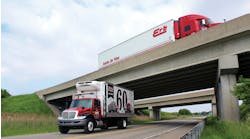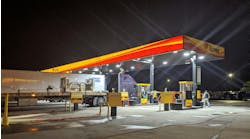Inflation, reduced freight, and more technician demand are pushing fleets to do more with less. Trucking companies’ parts and labor costs rose by nearly 2% in the third quarter of 2023, according to the recent Decisiv/TMC North American Service Event Benchmark Report.
To help make those maintenance dollars go further, our partners at FleetMaintenance shared some general ideas on fleet frugality that maintenance operations can implement this year:
Re-evaluate your oil change strategy
Oil and lubrication are among the most prevalent fleet maintenance expenses. But a few tweaks can help save a lot across a fleet. Sometimes, it comes with paying a little more upfront to save costs down the road.
API FA-4 oils, for example, cost more but can end up saving fleets money through fuel efficiency gains, according to Greg Matheson, product manager at Lubrizol.
“The fleets I’ve talked to said FA-4 oil costs a little more per gallon but say they are reducing fuel costs,” Matheson said. “They’ve done the ROI analysis, and the savings outweigh the extra cost of the oil. That’s what is most important to a fleet maintenance manager.”
For oil filters, seek to reach a balance between price and performance.
“The most expensive filter out there is not always necessary,” noted Paul Pettit, VP of maintenance for Riverside Transport. “But you don’t want to go with the cheapest, either, if you’re trying to protect your engine warranty coverage and meet the minimum standards. A catastrophic failure and voided warranty could end up costing a lot more than a high-end filter.”
See also: Truck parts tug of war: Increasing profits through parts purchases
Consider DPF cleaning-as-a-service
A diesel particulate filter’s job is to get dirty so the air doesn’t. That requires routine cleanings, and several machines can quickly accomplish the task and get these aftertreatment components working like new.
“When cleaning in-house, it’s possible to pull, wash, dry, and reinstall a DPF in a couple of hours,” said Steve Hoke, president of Diesel Emissions Service, the parent company of DPF cleaning brand Filtertherm. “That’s a same-day procedure, and the vehicle is back on the road.”
This helps a fleet’s uptime, but these machines can be expensive. To achieve an ROI in about a year, a fleet would need to have about 100 trucks go through that shop, said Jeremy Anderson, VP of sales at FSX Equipment. Even a fleet shop with fewer than 20 trucks can generate revenue by offering to clean other fleets’ DPFs.
This worked well for D&I Farms, a 35-truck fleet out of Fresno, California. “I started out cleaning for my inner circle of truck owner friends,” said Daniel Barandalla, owner of D&I. “Word got out pretty quickly, and the business has grown. I have my own team of technicians who also handle the DPF cleaning for our customers.”
Kenworth of Richfield, a dealer in Northeast Ohio, has also earned extra money by cleaning DPFs for neighboring terminals.
See also: Regenerating your DPF cleaning strategy
Deflate fleet tire expenses with tire tracking
Every truck has tires, and every tire wears out at some point. Pushing out that eventuality and predicting when it may happen prematurely are two keys to deflating tire expenses. This can be done simply by ensuring tires are properly inflated, reducing the risk of blowouts while improving fuel efficiency.
Tire pressure monitoring systems and automatic tire inflation systems are common yet not ubiquitous solutions designed to enable these benefits. More generally speaking, fleets should take a more comprehensive look at their tire programs, which for any fleet is one of its stop costs.
“Fleets with active tire management practices report fewer tire-related roadside service calls, more successful retread programs, and overall lower cost-per-mile for tires,” asserted Brandon Gray, operational marketing manager, B2B Services, at Michelin North America. “A well-managed program can save a fleet in many ways, including fewer violations, less downtime, and lower unplanned expenses.”
The programs often pay for themselves, said Austin Crayne, business development lead at Goodyear North America Commercial
“Some fleets have reported up to an 85% reduction in tire-related breakdowns, while others claim a 2-3% increase in fuel efficiency,” Crayne said.
See also: Tire management solutions that boost performance and lower costs




